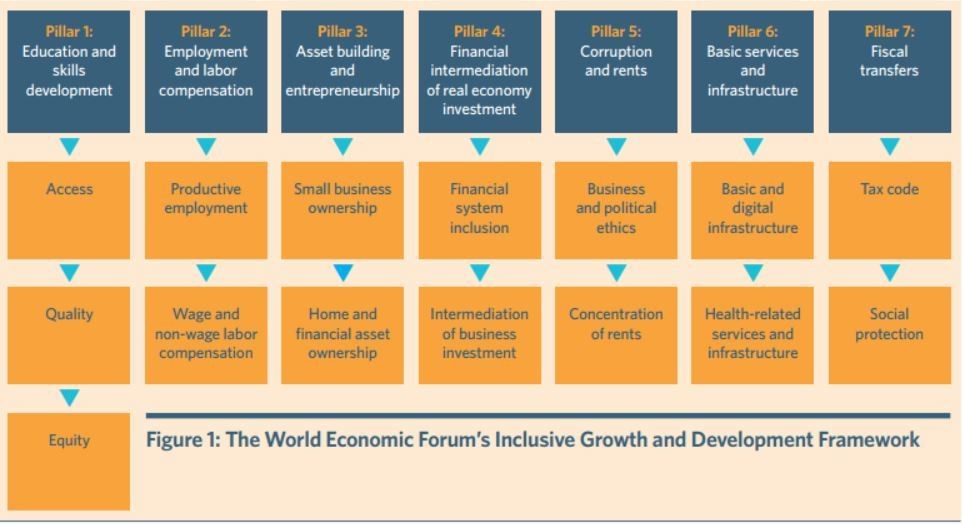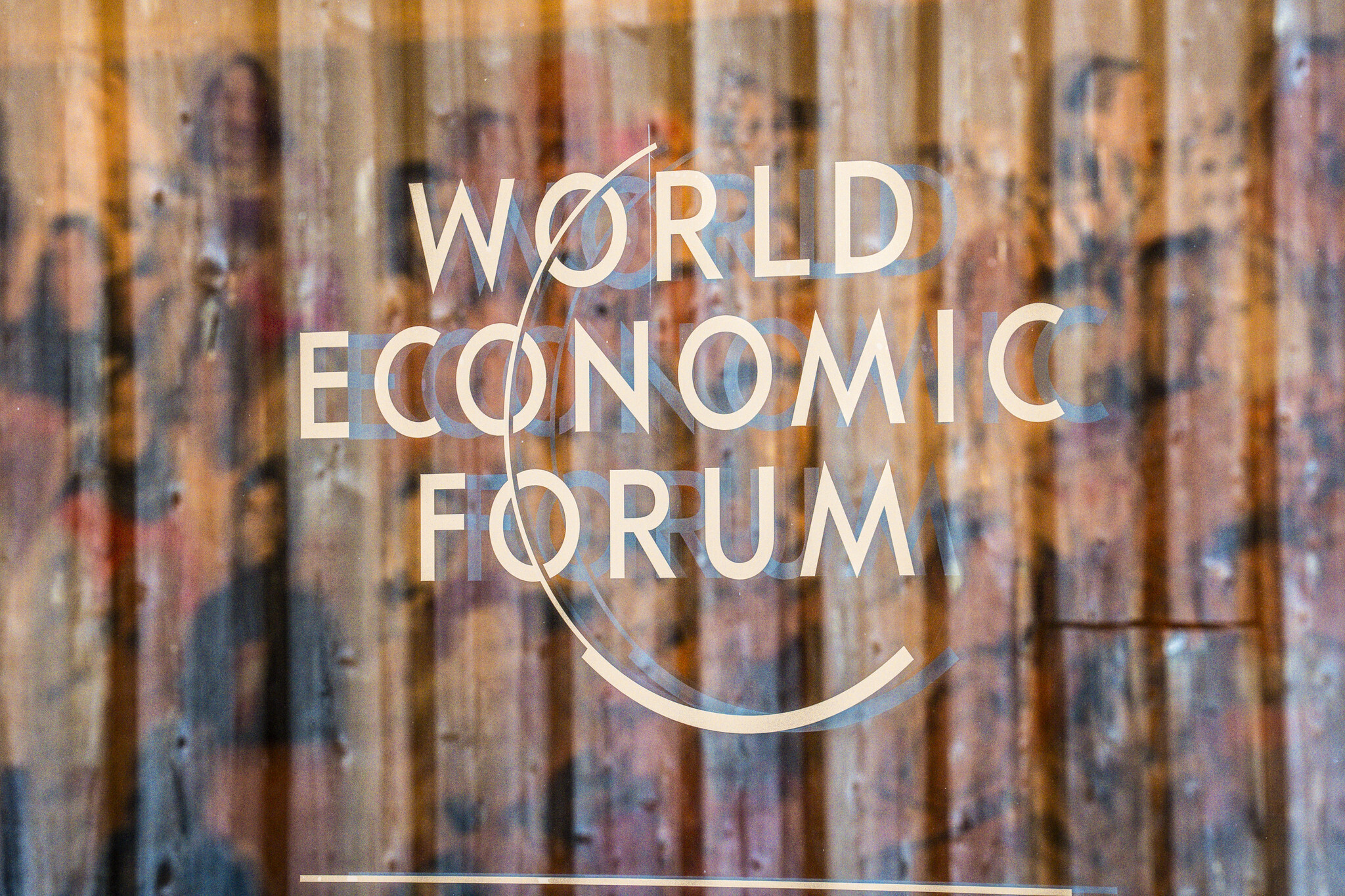Economic growth and fair development are not in conflict
"Rising income inequality is bad for growth."
Image: REUTERS/Afolabi Sotunde
Stay up to date:
Sustainable Development
This article will be published in UNA-UK’s upcoming publication ‘Sustainable Development Goals: The people’s agenda’.
The development challenges of the 21st century remain vast. Poverty has fallen in recent decades as economies have grown, at times very quickly, but at all income levels, many countries have experienced rising inequality. Economies will need to be transformed if they are to ensure sustained improvements in living standards for all the world’s citizens.
The Sustainable Development Goals (SDGs) recognise these challenges, notably in Goal 8 (“Promote sustained, inclusive and sustainable economic growth, full and productive employment and decent work for all”) and Goal 10 (“Reduce inequality within and among countries”). Many of the issues addressed by the other goals – including wider access to healthcare, better quality education, basic services such as sanitation, clean water and energy, and infrastructure that promotes industry and innovation – are also important inputs to economic growth that is inclusive and sustainable.
Nearly a decade on from the financial crisis, the global economy remains sluggish – averaging three per cent annual growth since 2008 – and productivity is stagnating. Countries are looking for the best ways to accelerate economic activity. It makes sense for the search for policy options to focus on levers that could simultaneously contribute to addressing development goals.
New sources of global growth will also be crucial to generating the funds necessary to achieve the SDGs, which are estimated to require around $4.5 trillion per year – greatly exceeding the $135 billion of development assistance spending from all governments in 2014. We urgently need to find new ways to mobilise private finance alongside public investment. This will require a better understanding of how the aims set out in the SDGs might be prioritised to maximise their impact.
Fortunately, there is more of an overlap between the economic growth and SDGs agendas than is generally appreciated. Political myths and polemics perpetuate the idea that goals such as reduced inequality are human rights issues that demand economic sacrifice, whereas evidence is mounting that they can in fact contribute positively to growth.
Perhaps more importantly, recent data analysis strongly suggests that rising income inequality is bad for growth. One short-term mechanism through which this can happen is that wealthier households typically spend a smaller percentage of their income, dampening aggregate demand and slowing economies down. In the longer term, poorer households find it harder to invest in health and educational opportunities, which means a nation accumulates less human capital and finds it harder to make gains in productivity.
At extreme levels, inequalities can threaten social unrest, thoroughly undermining economic activity. Spreading the gains makes growth more resilient to shocks and more sustainable in the long term. The question is how to align public and private actors around people-centred economic policymaking with a greater focus on societal goals.
In an effort to foster a better understanding of these issues, the World Economic Forum recently released the first edition of The Inclusive Growth and Development Report. This presents a policy framework and corresponding set of cross-country indicators in seven policy areas and 15 sub-areas that drive social participation in the process and benefits of economic growth. The framework and interactive benchmarking database covers more than 100 economies from all regions.
The goal of the work is to make discussions about socio-economic inclusion and inequality less theoretical and more actionable, by providing a sense of the wide spectrum of policy and institutional levers that can foster growth and social inclusion at the same time. These include policies that are often mentioned in this context, such as progressive redistribution and education. But they also include those that feature less often but which can be just as critical to a country’s success in advancing living standards and ensuring productive employment for all, such as entrepreneurship, access to finance for real economy investment, and lack of corruption.
Figure 1 provides a visual representation of the seven areas and 15 sub-areas of the framework, each of which has important links to various goals articulated by the SDGs. For example, Pillar 1 is strongly aligned with Goal 4, which looks to ensure inclusive and quality education and lifelong learning opportunities for all. Pillar 6, meanwhile, captures the accessibility and affordability of basic services like clean water, energy and quality healthcare as alluded to in Goals 3, 6 and 7.

Our analysis leads us to a number of conclusions that can help to direct policy-making and dialogue toward realising the SDGs (as we highlight in our report):
1. There is no inherent trade-off between promoting social inclusion and economic growth and competitiveness. It is possible to be pro-equity and pro-growth at the same time; not only is it impossible to improve everyone’s living standards without growing the economic pie, but policies that improve living standards and influence the way in which the pie is shared can also bolster growth. Several of the strongest performers in the Forum’s Global Competitiveness Index are good at ensuring that growth proceeds in a way that includes the many rather than the few.
2. Even the best-performing high-income countries have significant room for improvement. While the Millennium Development Goals previously cast high-income countries as enablers of progress in low-income countries, primarily by contributing a proportion of their GDP in aid, the SDGs’ greater focus on the sustainability and inclusivity of economic growth implies a need for all countries to re-evaluate their own domestic policies. The report shows that even the most advanced economies have significant scope to do better.
3. Some developing countries punch above their weight in promoting aspects of inclusive growth. As one would expect, high-income economies generally do better at spreading the benefits of growth given their more sophisticated markets and institutions. But there are notable examples of lower- and middle-income countries punching above their weight in particular areas. For example, Kenya effectively harnesses digital technologies for financial inclusion, while Brazil has been a trailblazer in deploying conditional cash transfers to reduce high levels of poverty and inequality.
4. Better measurement and benchmarking will be critical. Choosing the right priorities must start with an accurate assessment of where the greatest problems lie. Inclusive growth is a relatively new area of study, and only better data will help us to understand the links between growth and inclusivity. Tracking progress, and publicising the successes and shortfalls, is also vital for sharing examples of effective practice and motivating governments to do better than their peers.
5. Problem identification is not enough – we must work together to find innovative solutions. Creating wider acceptance that there is not necessarily a contradiction between being pro-labour and pro-business is only the first step towards the practical work of imagining and marshalling the coalitions necessary to construct sustainable national strategies for inclusive growth. These strategies should encompass areas including macroeconomic policy and competitive markets to economic institution-building.
Goal 17 of the SDGs recognises the need for new partnerships among governments, businesses and civil society. There are many opportunities for corporations to create value for society as well as shareholders – training locals can create employment as well as improve the resilience, efficiency and effectiveness of distribution channels and supply chains, for example. Widening the conversation will open up more room for innovation and experimentation, which will be crucial.
The Inclusive Growth and Development Report provides the basis for an initiative launched by the World Economic Forum aimed at bringing together all of the relevant stakeholders to develop better models for fostering economic growth and social inclusion around the world. With concerted action from all actors, achieving the SDGs is within our reach.
Authors: Jennifer Blanke, Chief Economist, and Gemma Corrigan, Economist, Economic Growth and Social Inclusion Initiative, World Economic Forum
To find out more about the work of UNA-UK, please visit www.una.org.uk. You can register to receive the PDF version of the publication at www.sustainablegoals.org.uk
Don't miss any update on this topic
Create a free account and access your personalized content collection with our latest publications and analyses.
License and Republishing
World Economic Forum articles may be republished in accordance with the Creative Commons Attribution-NonCommercial-NoDerivatives 4.0 International Public License, and in accordance with our Terms of Use.
The views expressed in this article are those of the author alone and not the World Economic Forum.
Related topics:
Forum Stories newsletter
Bringing you weekly curated insights and analysis on the global issues that matter.
More on Forum in FocusSee all
Gayle Markovitz
October 29, 2025
Spencer Feingold and John Letzing
October 14, 2025
Andrea Willige and Gayle Markovitz
September 15, 2025
Kate Whiting and Charlotte Edmond
September 9, 2025
World Economic Forum
June 26, 2025






